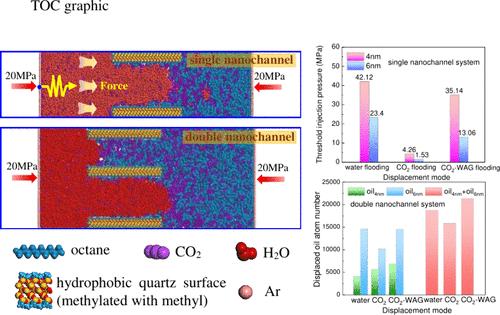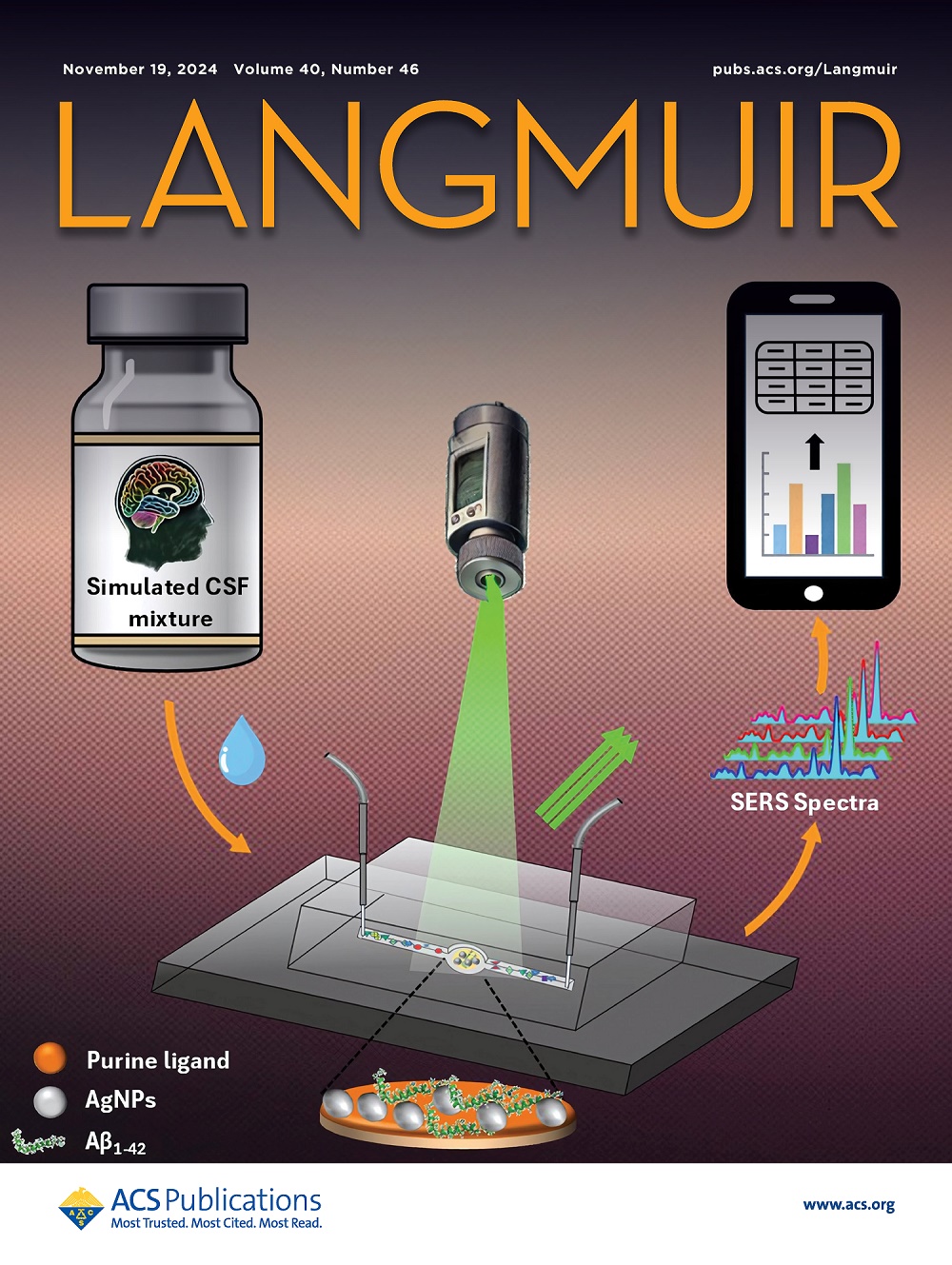Molecular Insights into the EOR Mechanism of Water, CO2, and CO2–WAG Flooding in Heterogeneous Nanochannels: A Molecular Dynamic Simulation
IF 3.7
2区 化学
Q2 CHEMISTRY, MULTIDISCIPLINARY
引用次数: 0
Abstract
In tight oil exploitation, the water flooding, CO2 flooding, and CO2 water gas alternate (CO2–WAG) flooding are three commonly adopted methods to enhance the oil recovery (EOR), and the heterogeneous of reservoir has crucial influence on the oil sweep volume and oil displacement efficiency. In this work, molecular dynamic simulation was employed to investigate the displacement behavior in these three flooding methods in the heterogeneous tight reservoir. First, a single nanochannel was used to investigate the different displacement performances in these three flooding methods. Then a double nanochannel model were constructed to mimic the heterogeneous tight reservoir. The threshold injection pressure of three flooding modes was calculated. The number of displaced oil molecules was used to evaluate the oil displacement efficiency. Simulation results showed that the threshold injection pressure gave the following order: CO2 flooding < CO2–WAG flooding < water flooding. In double nanochannel systems, the injecting water passed through the large-sized nanochannel, and the oil inside the small-sized nanochannel could not be displaced in water flooding and CO2–WAG flooding. In CO2 flooding, some oil molecules inside two nanochannels were displaced, and the oil displacement efficiency in the large-size nanochannel was higher than that in the small-size nanochannel. The comparison of these three flooding methods showed that the CO2–WAG flooding has priority over the other two flooding methods, exhibiting both low threshold injection pressure of gas flooding and high oil displacement efficiency of water flooding; consequently, high EOR could be achieved. Our work was helpful to deeply understand the microscopic oil displacement processes of different flooding methods, and it has reference value for the development of tight oil reservoirs.

求助全文
约1分钟内获得全文
求助全文
来源期刊

Langmuir
化学-材料科学:综合
CiteScore
6.50
自引率
10.30%
发文量
1464
审稿时长
2.1 months
期刊介绍:
Langmuir is an interdisciplinary journal publishing articles in the following subject categories:
Colloids: surfactants and self-assembly, dispersions, emulsions, foams
Interfaces: adsorption, reactions, films, forces
Biological Interfaces: biocolloids, biomolecular and biomimetic materials
Materials: nano- and mesostructured materials, polymers, gels, liquid crystals
Electrochemistry: interfacial charge transfer, charge transport, electrocatalysis, electrokinetic phenomena, bioelectrochemistry
Devices and Applications: sensors, fluidics, patterning, catalysis, photonic crystals
However, when high-impact, original work is submitted that does not fit within the above categories, decisions to accept or decline such papers will be based on one criteria: What Would Irving Do?
Langmuir ranks #2 in citations out of 136 journals in the category of Physical Chemistry with 113,157 total citations. The journal received an Impact Factor of 4.384*.
This journal is also indexed in the categories of Materials Science (ranked #1) and Multidisciplinary Chemistry (ranked #5).
 求助内容:
求助内容: 应助结果提醒方式:
应助结果提醒方式:


